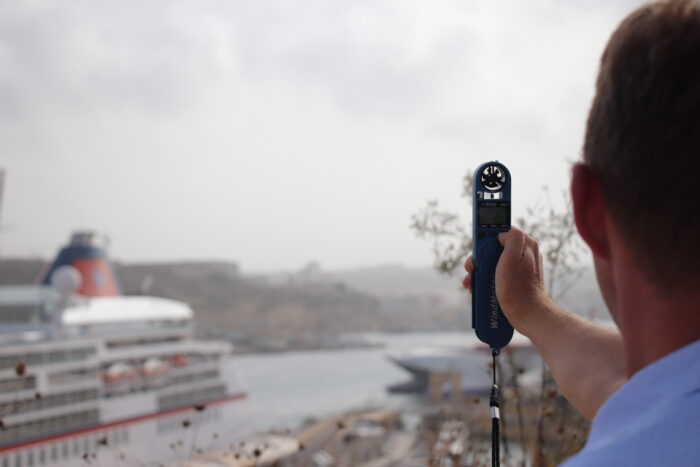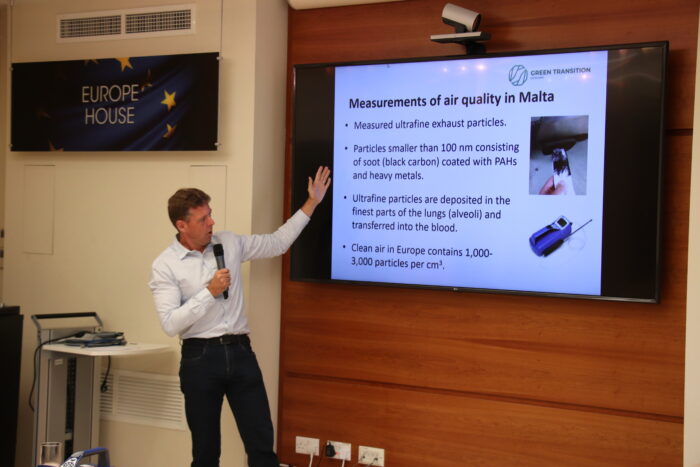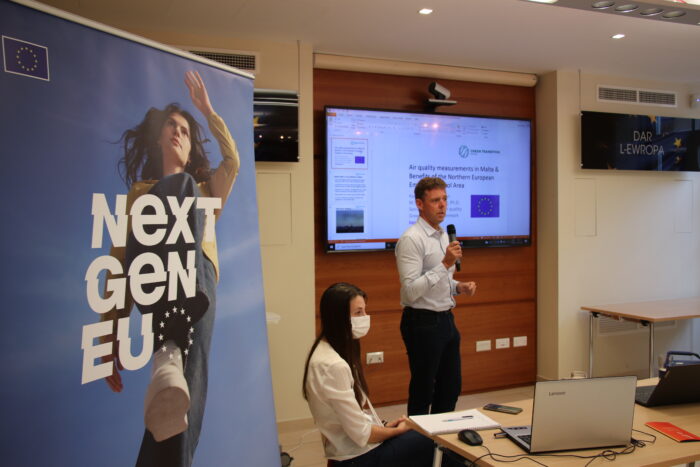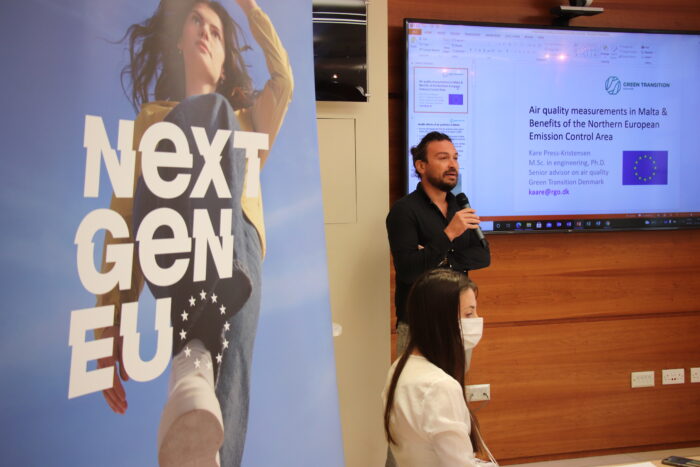Measurements of air quality taken in the past weeks in shipping activity hotspots in Malta revealed concentrations up to 100-200 times higher than the air levels expected of areas not exposed to any pollution sources.
The air pollution measurements taken in Valletta and Senglea showed a high concentration of ultrafine particles in the ambient air during the time ships are transiting through the Grand Harbour. These included cruise-liners and smaller boats. Recent measurements from Italy show very high pollution levels from ferries as well. Such particles, which are deposited in the finest parts of the lungs and transferred into the blood, are known to be a major risk to human health as they trigger severe heart and lung diseases.
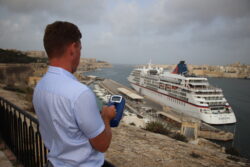
Danish scientist presents results of air pollution measurements taken in Malta over the past weeks
The results were presented earlier today in Valletta during a press conference, and later in a workshop – which were held at the European Commission Representation in Malta – by Danish scientist Kare Press-Kristensen, Senior Advisor for Green Transition Denmark, an independent NGO in Denmark promoting the green and sustainable transformation of society. Also present were BirdLife Malta officials led by Head of Conservation Nicholas Barbara.
Press-Kristensen has in the past weeks visited Malta to take measurements of air pollution for LIFE4MEDECA – an EU LIFE-funded project leading efforts for the establishment of an Emission Control Area (ECA) in the Mediterranean Basin. This partnership is composed of different organisations from several Mediterranean countries and its Advisory Board includes the European Commission and the competent Ministries of France, Italy, Spain and The Netherlands.
As an active member of the Together against Air Pollution from Ships network, BirdLife Malta shares the same objectives. Over the past years we have been, together with other partner NGOs in the region, raising awareness about the damage caused to our health and climate by maritime transport air pollution in the Mediterranean and promoting solutions on how this can be reduced. Even in our case, the goal is the establishment of a Mediterranean ECA which effectively means that large ships operating in the region are obliged to use cleaner fuels and flue gas cleaning systems, limiting sulphur (SOx) content and nitrogen (NOx) emissions when entering the Mediterranean.
During his presentation, Kare Press-Kristensen explained how there is some good news for Malta: there is clean air in the island. However the bad news is that small ships pollute locally whilst large ships visiting the Maltese Islands pollute whole cities.
He explained that around 250 people (6.5% of 3,800 annual deaths) die from air pollution every year in Malta and in 2020-2021 air pollution killed more people in the Maltese Islands than COVID-19. (500 compared to 460). The effects of air pollution on human health include cardiovascular diseases such as strokes and heart diseases, together with airway diseases and cancer which are the main causes of death in Malta. On the other hand, it is very cost-effective to reduce air pollution from shipping due to saved health costs.
Speaking about solutions, he listed the benefits of existing Emission Control Areas in Europe such as the Northern European ECA comprising the Baltic and North Seas. Thanks to stricter controls established in these areas to minimise airborne emissions from ships, a high reduction in sulphur on land (50% drop in 2015) was registered together with significant health and economic benefits for society which came about without any notable price increases for consumers or extra costs for ship owners and authorities.
Whilst also mentioning the use of electric ferries as an area of great potential in Malta, another important solution – he explained – was the use of shore power at berth which would also significantly improve public health in Malta. In 2020, Infrastructure Malta launched the Grand Harbour Clean Air Project, a €50 million shoreside electricity project whose aim is to cut over 90% of the air pollution that cruise liners and Ro-Ro ships produce when visiting the Grand Harbour. Shore-to-ship power facilities will allow cruise liners to switch off their gas or HFO-fired engines and plug in to shoreside electricity points to power their services while they are berthed.
Estimates show how shore power can also be good for business, with negligible extra costs per passenger per port. An example cited during the press conference shows how whilst a cruise ship uses about 30 kWh per passenger and normally produces electricity for €0.18/kWh, if port electricity could be sold for €0.23/kWh (€0.05 higher), the extra cost per passenger per port would amount to just €1.50 or 1% (30 kWh x €0.05 per kWh) which is less than the price of a cup of coffee at a cruise port! Translated into a typical seven-day cruise visiting four ports, the increase would be €6. (€670 without shore power vs €676 with shore power).
Complemented with other possible solutions such as the creation of a Mediterranean ECA – which BirdLife Malta has been advocating in the past years – this could potentially lead to a drastic reduction in air pollution with tangible health and environmental benefits to Malta.
Read the Maltese version of the press release here. Watch footage of the air pollution measurements and the press conference below.


